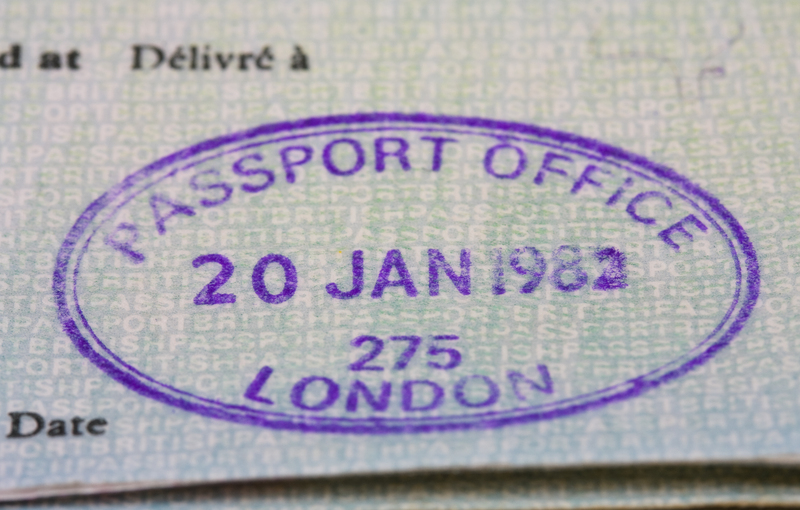How to Maintain Your Freezer's Integrity During Storage Periods
Freezer storage is a cornerstone of modern food preservation. Whether you're freezing leftovers, meats, vegetables, or prepared meals, your freezer's ability to keep contents at optimal temperatures is essential for maintaining food safety and quality. But what happens during prolonged storage periods, such as vacations, seasonal downtimes, or times when the freezer isn't accessed routinely? This comprehensive guide details how to maintain your freezer's integrity during storage periods--ensuring your appliance works efficiently, minimizes energy costs, and keeps stored items safe for consumption.
Understanding Your Freezer's Role in Food Safety
A freezer's primary function is to keep food at or below 0?F (-18?C). This temperature effectively halts bacterial growth, preserving food for months or even years. However, improper maintenance during storage periods may compromise the unit's ability to consistently keep food safe, resulting in freezer burn, loss of nutrients, unpleasant odors, and even spoilage.
- Integrity refers to the freezer's capacity to maintain temperature and environment stability.
- Proper care extends lifespan and assures *food safety*.
- Negligence can lead to costly energy bills and food waste.

Preparing Your Freezer for Long-Term Storage
Whether you're planning for seasonal shutdowns or simply keeping frozen goods over extended periods, preparation is key. Here's what you should do:
Clean and Declutter the Freezer
- Remove all food items and sort them. Dispose of anything past its expiration date or with signs of freezer burn.
- Unplug the freezer and let it defrost if significant ice buildup is present.
- Wash all interior surfaces with a solution of baking soda and water. This neutralizes odors and sanitizes.
- Clean removable components like shelves or baskets separately.
Inspect and Address Mechanical Components
- Check door seals (gaskets) for cracks, warping, or stickiness. Damaged seals can let in warm air or moisture.
- Examine the condenser coils (usually on the back or bottom). Dust and pet hair buildup reduce efficiency and may compromise cooling. Clean gently with a vacuum or soft brush.
- Ensure the temperature sensor is unobstructed and functioning.
Replace and Organize Food Properly
- Group similar items together (e.g., meats with meats, vegetables with vegetables) for easier inventory checks.
- Use airtight, freezer-safe containers or heavy-duty freezer bags.
- Label everything with the date of freezing.
- Avoid overfilling; overpacked freezers may restrict airflow, while underfilled freezers waste energy and can fluctuate in temperature.
Best Practices for Maintaining Freezer Integrity During Storage
To preserve your freezer's performance, adhere to the following best practices during storage periods:
Monitor and Maintain Temperature Consistency
- Keep your freezer at 0?F (-18?C) or lower; use an appliance thermometer for accuracy.
- Avoid frequent door openings, especially during idle storage periods.
- If the freezer is situated in a hot area (garage or unconditioned space), consider insulating exterior walls or relocating the unit for periods of inactivity.
Practice Smart Loading and Air Flow Management
- Leave about 1 inch of space around food packages for air to circulate.
- If you cannot fully fill the freezer, add water containers (plastic jugs or bottles). These help maintain cold temperatures and reduce fluctuations when the door is opened.
- Stacking items too tightly restricts air flow and unevenly chills food.
Regular Inspection and Maintenance Routine
- Set reminders to visually inspect your freezer at least once monthly.
- Quickly check for ice buildup, frost, unusual noises, or water leaks.
- Smell for musty or off odors, which may indicate mold or spoiled food.
- Re-clean and discard old or unknown items if the freezer hasn't been accessed in months.
Addressing Common Freezer Challenges During Storage
Even well-maintained freezers can experience issues during extended storage times. Proactively addressing these problems will maintain your freezer's integrity for the long haul.
Dealing With Power Outages
- If power interruption occurs, keep the freezer door shut as much as possible.
- Most full freezers keep food safely frozen for 2 days, while half-full units last about a day.
- After the outage, check temperatures and food safety. If foods still contain ice crystals, they can usually be refrozen.
- Consider investing in a backup power supply if outages are common in your area.
Minimizing Frost and Ice Buildup
- Frost buildup results from humid air entering the compartment and condensing.
- Limit the amount of time the freezer door stays open.
- Fix gasket leaks promptly to prevent exterior air intrusion.
- Avoid placing warm, uncovered food directly into the freezer.
Preventing Odors and Cross-Contamination
- Always use *airtight packaging* and containers.
- Place a small open box of baking soda inside to absorb potential odors.
- Check for spills or leaks and address them immediately.
- Store raw meats separately and below ready-to-eat items to prevent drips and contamination.
Proactive Tips to Preserve Your Freezer's Efficiency
Maintaining your freezer during storage periods isn't just about food safety; it's also about energy efficiency, lifespan, and reliability of the appliance.
Defrost Regularly or Invest in Frost-Free Models
- Frost-free or auto-defrost freezers minimize manual maintenance but still require periodic checks for component reliability.
- Manual-defrost freezers should be unplugged and defrosted if frost exceeds 1/4 inch thickness.
Check and Adjust Freezer Placement
- Ensure at least 1-2 inches of clearance around all sides for proper ventilation.
- Position freezers away from direct sunlight, heat registers, or ovens.
- An uneven surface may lead to poor door sealing or compressor issues; use a level to check the floor under the freezer.
Replace or Repair Faulty Parts Promptly
- Gaskets, thermostats, and compressors are vital to temperature maintenance; address malfunctioning parts immediately.
- Refer to your freezer's manual for replacement part numbers and authorized service instructions.
Seasonal and Extended Downtime Freezer Maintenance
If you intend to leave your freezer unused for a season (e.g., vacation home, seasonal business), thorough shutdown protocol is crucial for sustaining its integrity during storage periods:
Steps to Safely Shut Down Your Freezer
- Remove all food and dispose, donate, or find alternate storage if necessary.
- Unplug and defrost completely.
- Wipe the interior dry and leave the door slightly ajar to prevent trapped odors or mold.
- Secure the door ajar with a bungee cord or child-safe lock to prevent accidental closing.
Restarting After a Storage Period
- Visually inspect for pests, mold, or mechanical issues before plugging in.
- Plug in and allow to cool to operating temperature (about 0?F/-18?C) before placing food inside.
- Restock gradually, using oldest items first, and revert to regular inspection routines.
Signs Your Freezer's Integrity is Compromised
Recognize early warning signs to prevent costly repairs, wasted food, or safety risks during long storage episodes:
- Fluctuating temperatures or inconsistent freezing
- Visible mold or rust inside the compartment
- Frequent, unexplained frost buildup
- Strange noises, like rattling, humming, or clunking
- Persistent odors that do not disappear with cleaning
- Door not sealing properly
*If any of these issues persist, consult a professional appliance technician before relying on the freezer for further storage.*

Frequently Asked Questions about Freezer Maintenance
How often should I clean my freezer?
For optimal freezer storage integrity, clean the interior at least every six months, or whenever frost exceeds 1/4 inch thickness. Inspect packaging and check for spills every month if the freezer is used continuously.
Is it better to keep the freezer full or empty?
A properly-filled freezer (around 75-85% full) maintains cold temperatures more efficiently, as the mass of frozen items helps stabilize the environment. Avoid overstuffing to permit air circulation; if storing only a few items long-term, supplement with frozen water bottles.
Should I unplug my freezer during extended downtime?
If you will not be using the unit for weeks or months, it's best to unplug it, defrost, clean, and leave the door ajar as outlined above. For short downtime (under 2 weeks), keep it running, but minimize access and periodically inspect it for problems.
What is freezer burn and how can I prevent it?
Freezer burn occurs when food surfaces become dehydrated by air exposure, resulting in tough, discolored patches. Prevent by using airtight packaging, minimizing temperature fluctuations, and following recommended storage time guidelines.
Conclusion: Protecting Your Freezer's Integrity for the Long Haul
Maintaining your freezer's integrity during storage periods isn't complex, but it does demand diligence, awareness, and regular care. By committing to cleaning, inspecting, properly packaging items, monitoring temperature, and following shutdown protocols when necessary, you preserve the long-term reliability of your freezer and safeguard your investment in stored foods.
Consistency is everything: Integrate these habits into your home or business routine to enjoy uninterrupted, safe, and energy-efficient freezer storage through all seasons. If you ever doubt your unit's performance, don't wait--schedule a professional inspection. Your peace of mind (and your frozen food) are worth it!



